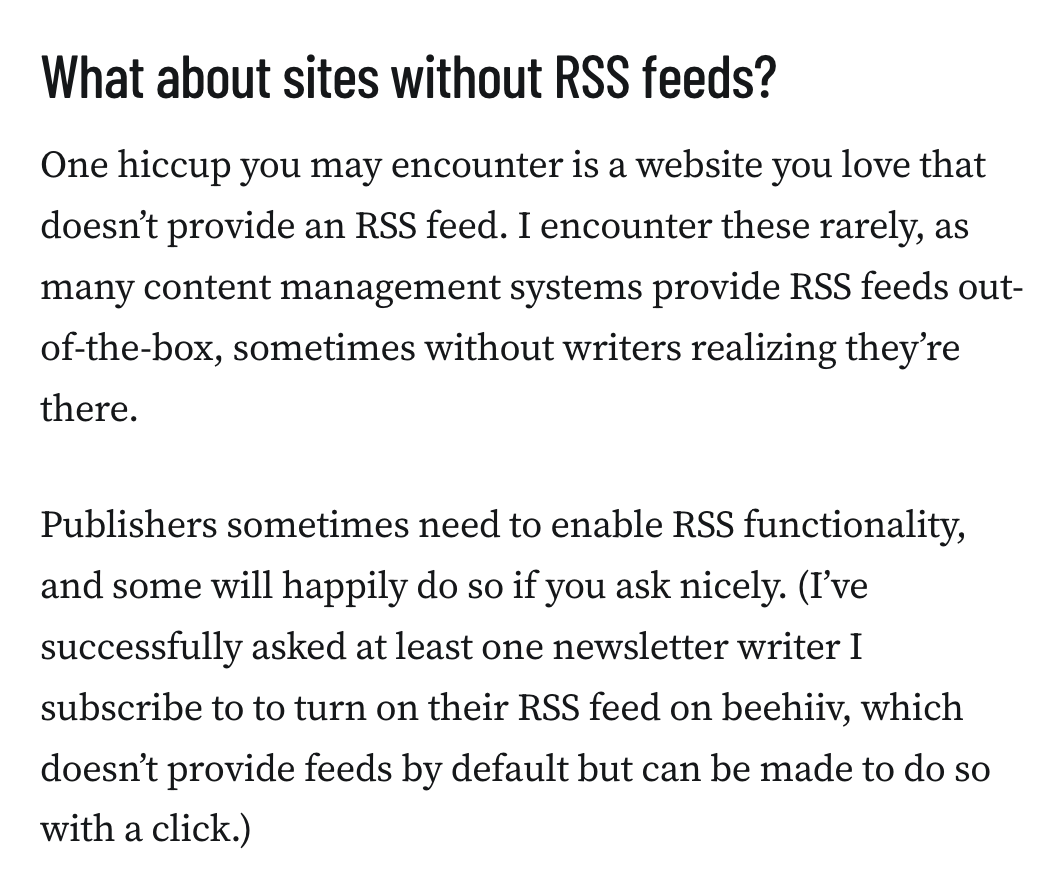What if you could take all your favorite newsletters, ditch the data collection, and curate your own newspaper? It could include independent journalists, bloggers, mainstream media, worker-owned media collectives, and just about anyone else who publishes online. Even podcast episodes, videos from your favorite YouTube channels, and online forum posts could slot in, too. Only the stuff you want to see, all in one place, ready to read at your convenience. No email notifications interrupting your peace (unless you want them), no pressure to read articles immediately. Wouldn’t that be nice?
Platforms like Substack recognize this appeal, and invite you to follow numerous writers in a tidy feed on their app. But with Substack, you’re limited to following only the writers who publish on that platform. You’re also at the mercy of their rapidly accelerating enshittification, as they work to lock readers and writers into the product, while making the experience worse for both.
There’s a more enshittification-proof option.


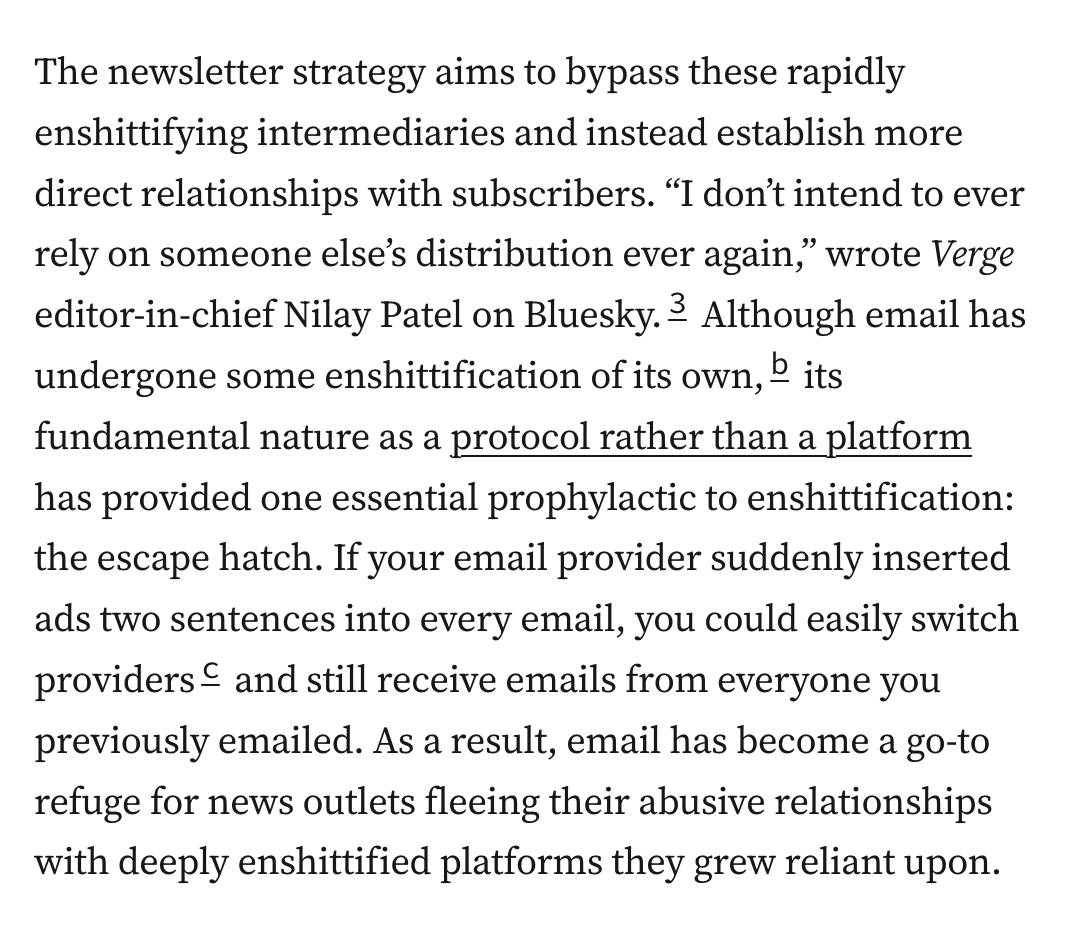
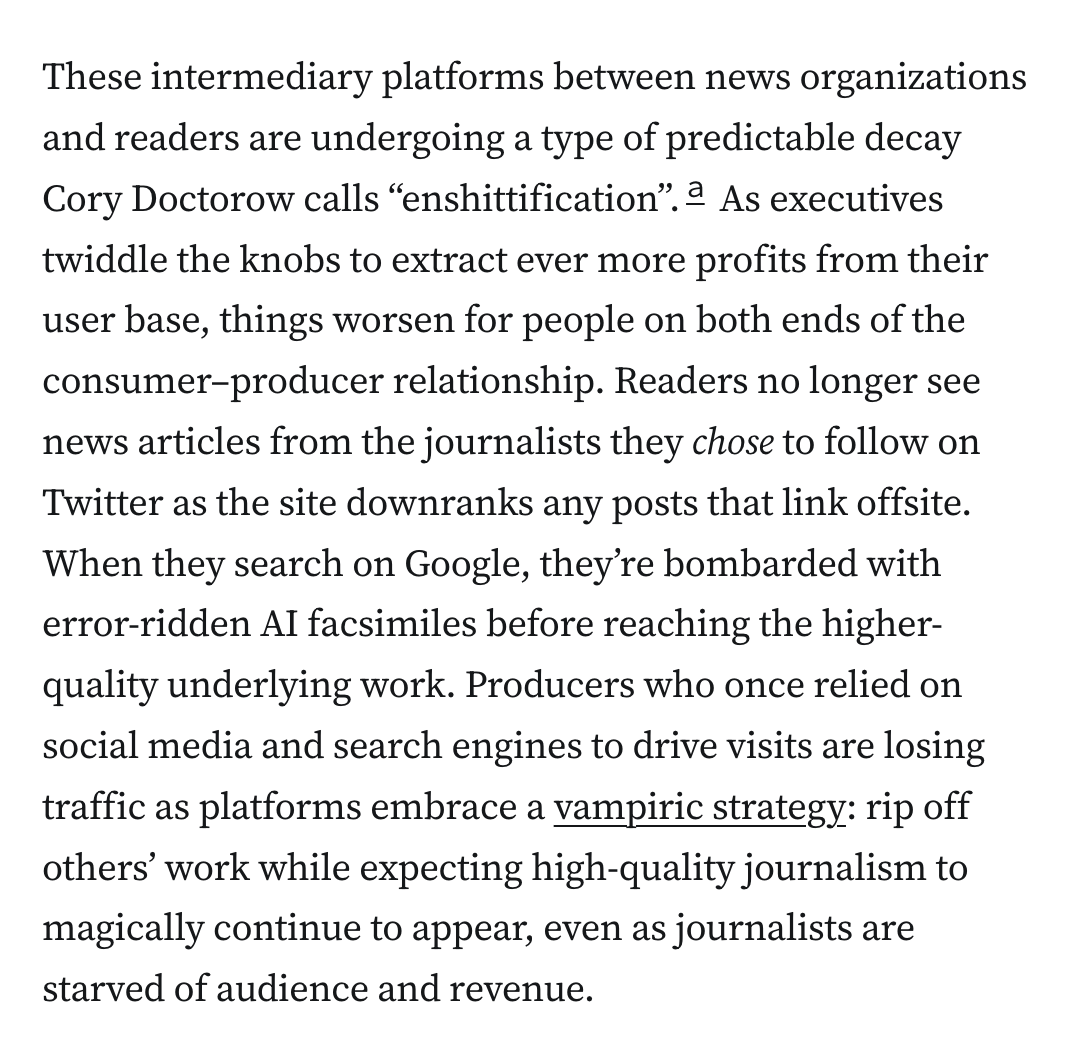
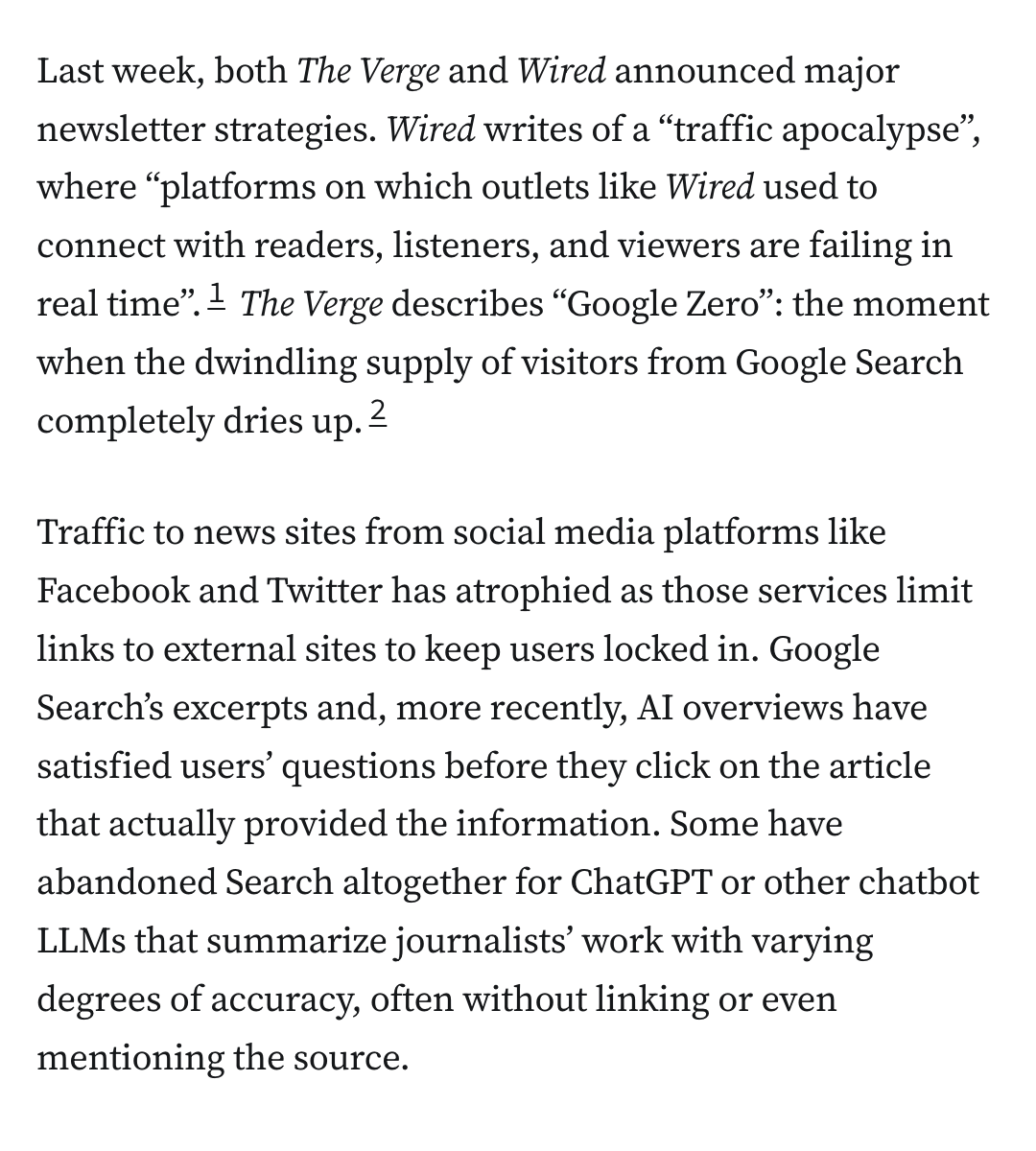
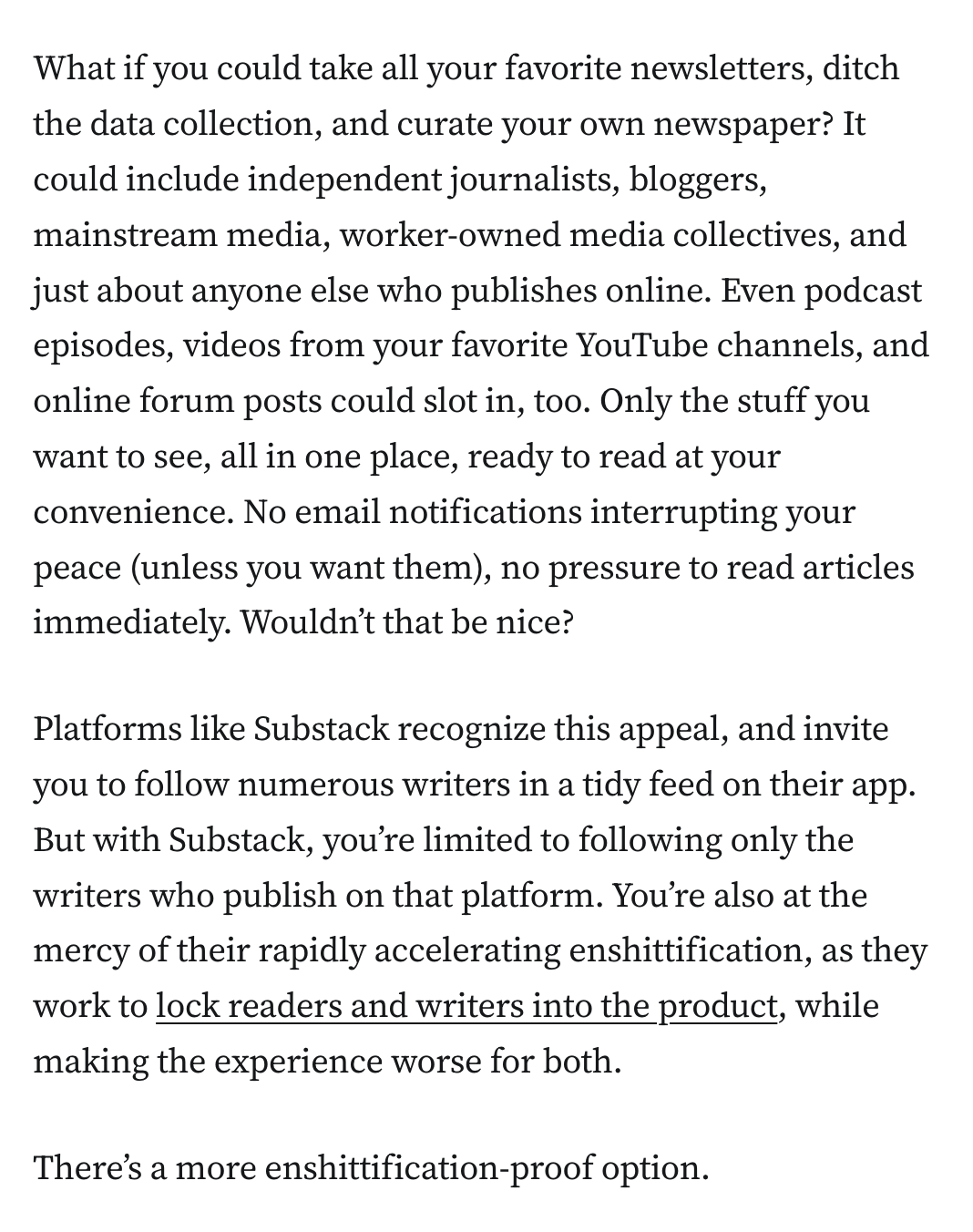
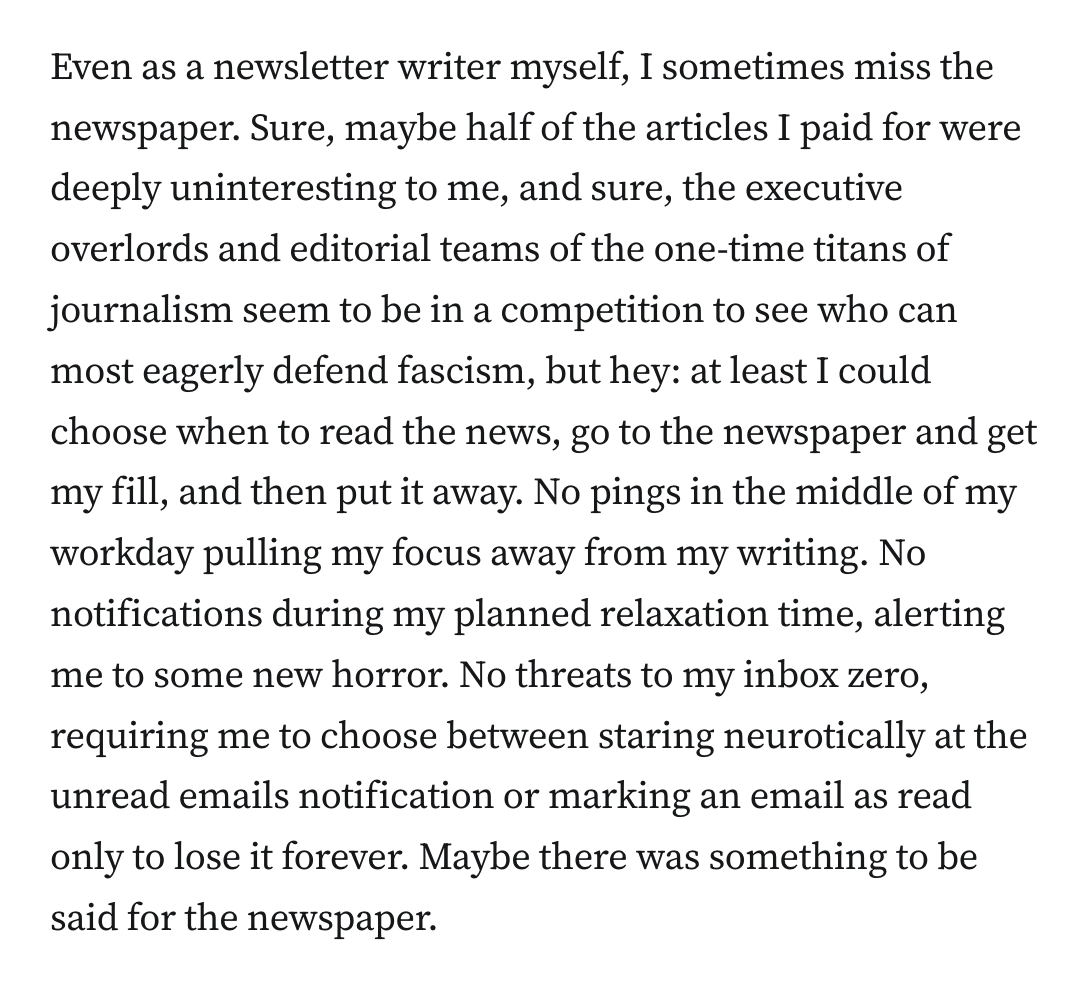
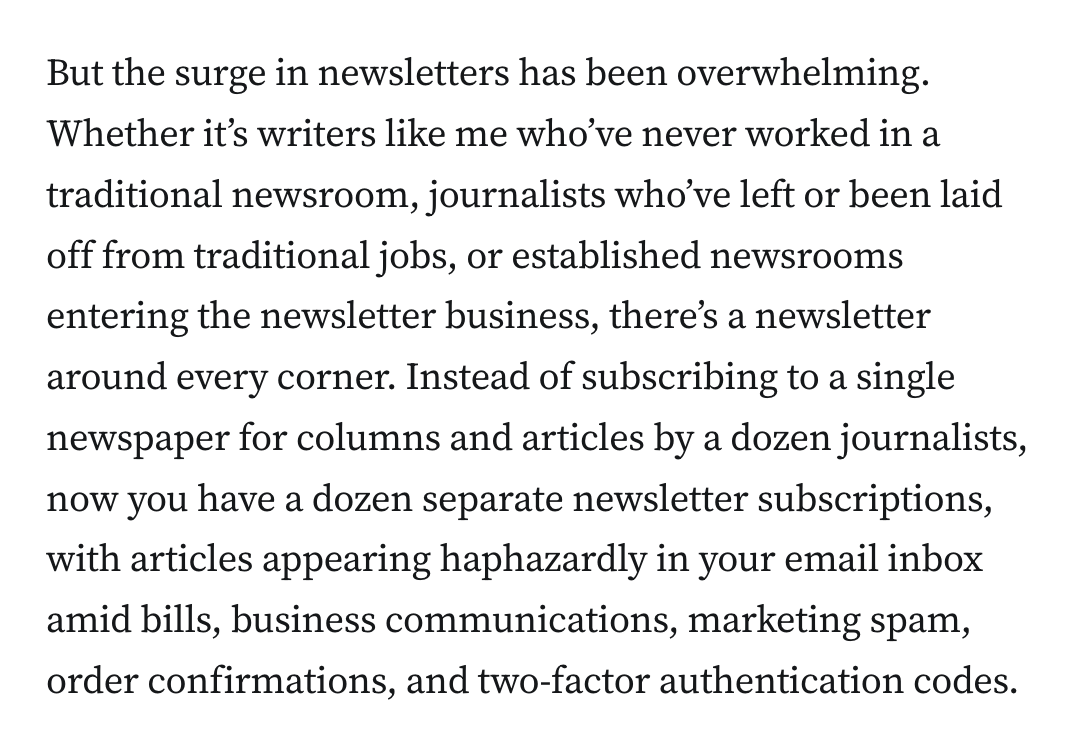
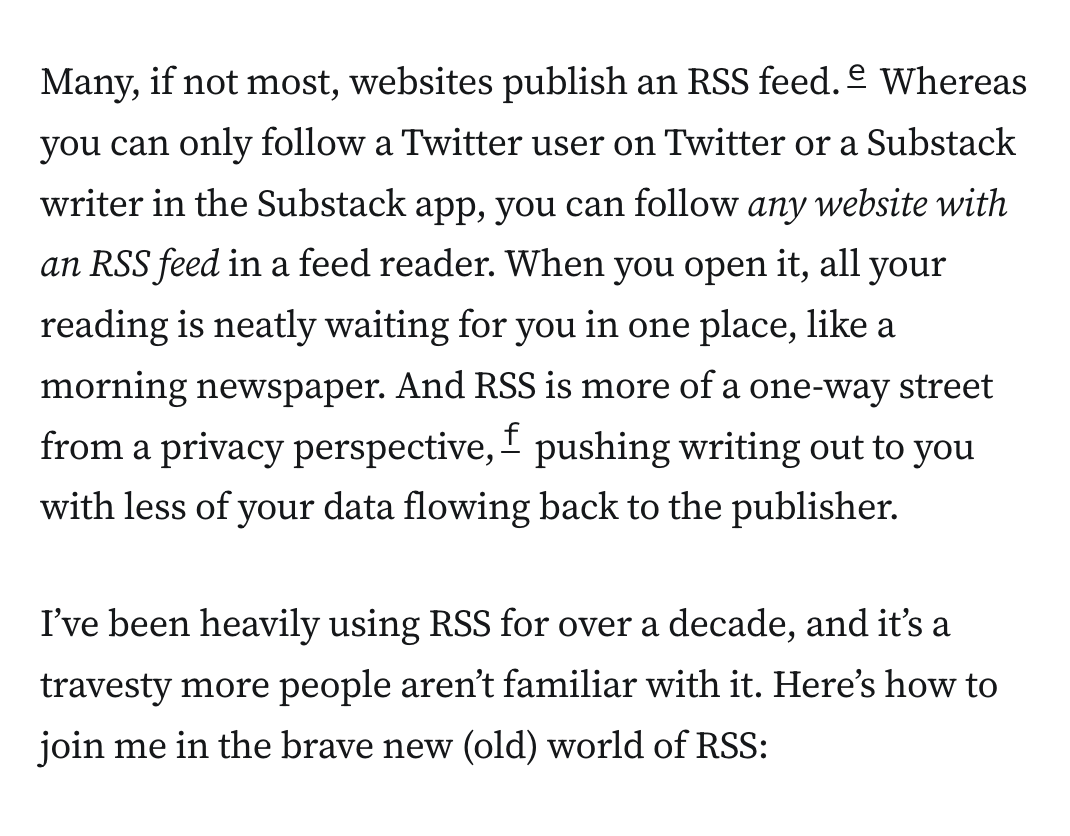
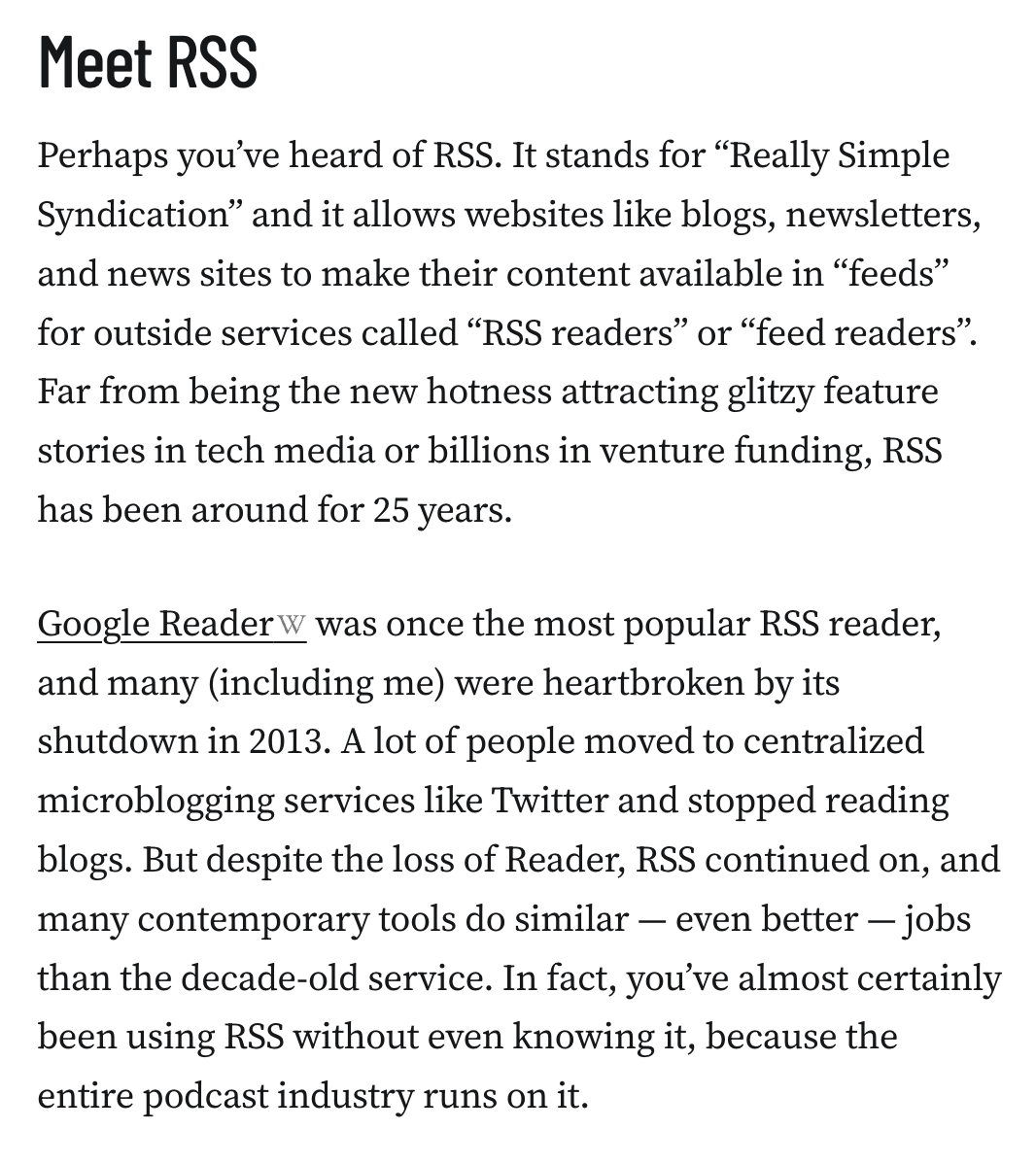
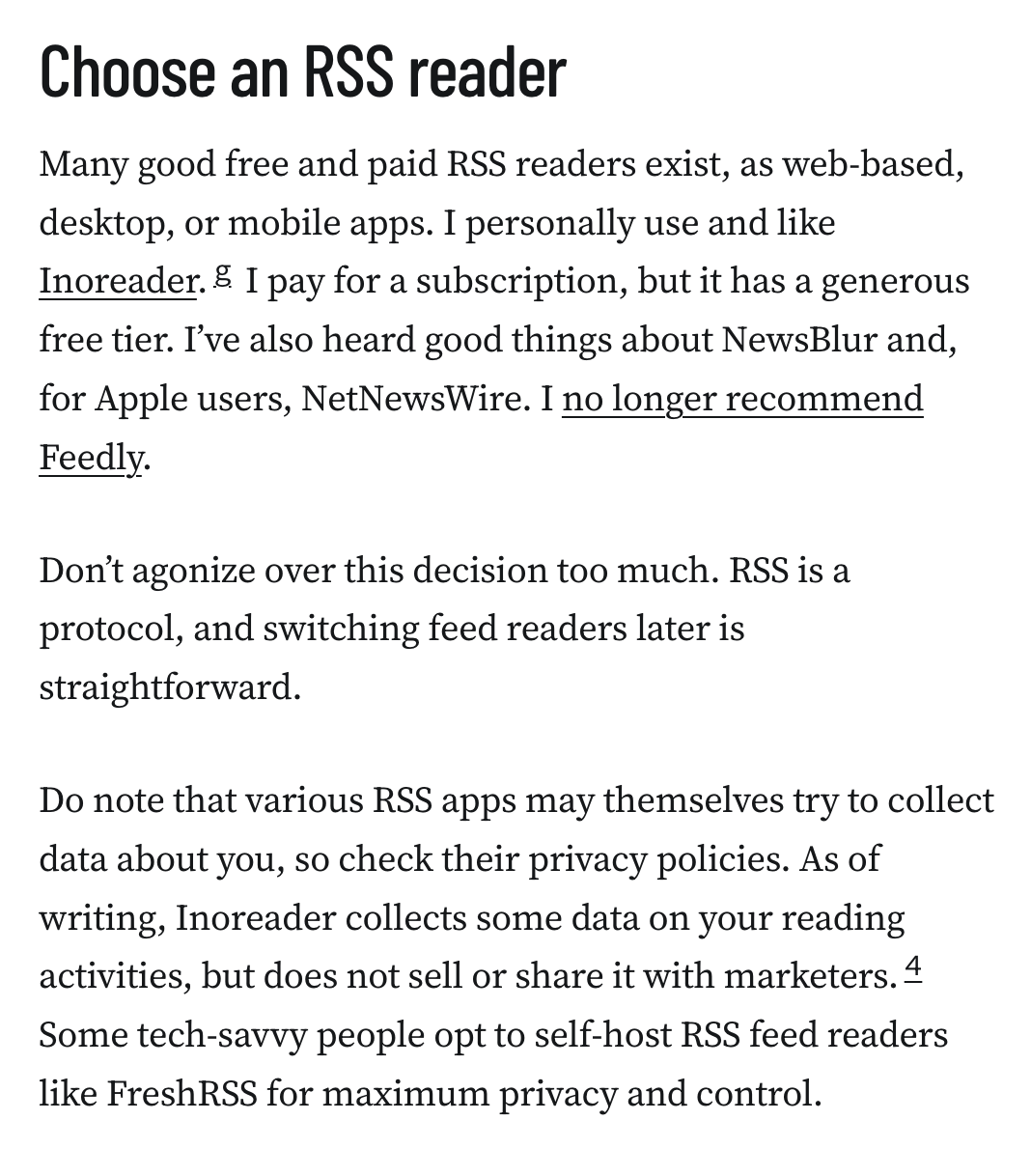
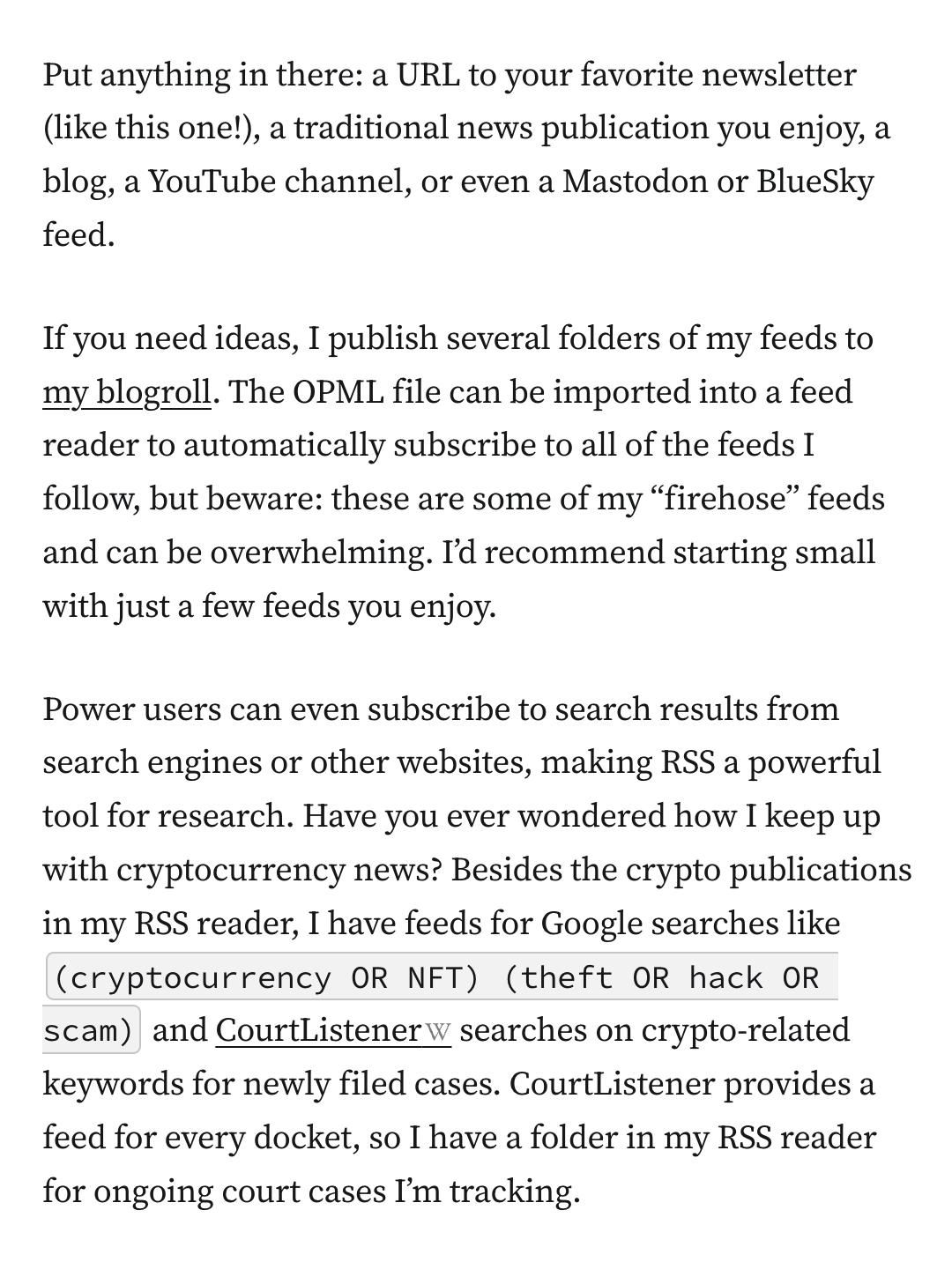
![Add your sites
Once you select a feed reader, add the feeds you wish to follow. Most feed readers let you paste a website’s URL to find available RSS feeds. Some websites have multiple RSS feeds, like Wired, which allows you to subscribe to a firehose of all articles or trim things down by subscribing separately to specific topic feeds like science or cybersecurity.
[Image: Inoreader feed results for wired.com, showing an all posts feed and a feed called “Science latest”]](https://media.hachyderm.io/media_attachments/files/114/948/828/219/508/808/original/f820d9657d064177.png)

